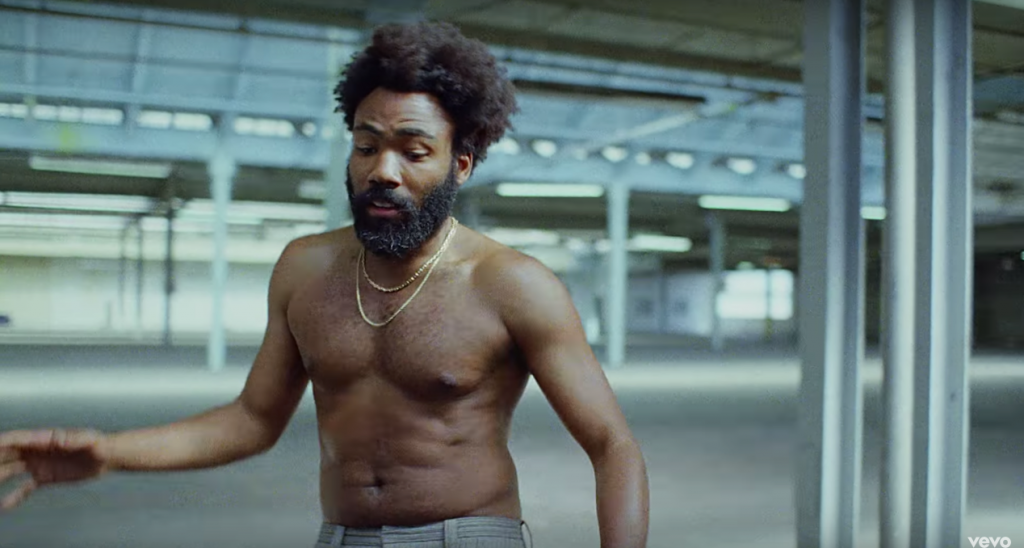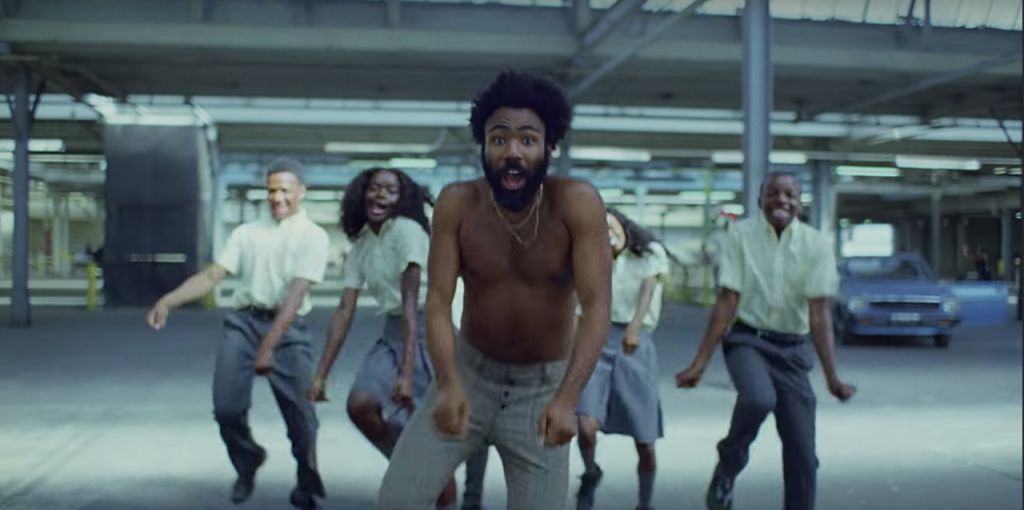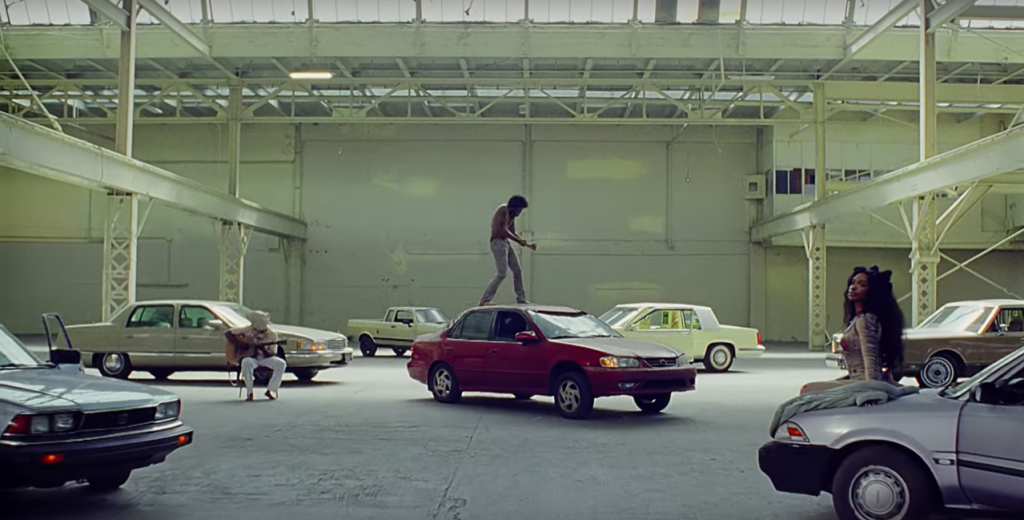Warning – This Video Contains Some Violent Scenes. Video Credit: Donald Glover / Childish Gambino via YouTube
Phones were abuzz this week after Childish Gambino released his new single on Saturday Night Live. Since then the internet has been debating and dissecting the track, its incredible video, and all of the intricate messages within them. Hannah Johnson takes a look from a human rights perspective.
The video to ‘This Is America’ is almost inseparable from the track itself. Filmed in a huge warehouse, it pendulums between vaudeville dancing to outright mayhem and almost casual violence.
The themes explored in the four minute video are controversial, contemporary and complex: they also have a distinct human rights foundation, something which has never been more relevent.
‘This Is America’ Highlights Racism Through The Ages
 Image Credit: Donald Glover / Childish Gambino via YouTube
Image Credit: Donald Glover / Childish Gambino via YouTube
The opening scene sees Childish Gambino (aka Donald Glover: actor, director, comedian, musician, writer, polymath) punctuating a joyful, innocent intro by shooting a bagged man at close range in a pose disturbingly reminiscent of Jim Crow.
Jim Crow was a theatre character created by Thomas Dartmouth ‘Daddy’ Rice in the 1800s.
A poverty rate of 9% for white people. A poverty rate of 22% for black people.
KFF
While the origins of the character have been lost to history, the name became synonymous with the so-called Jim Crow laws, which were a codified system of racial apartheid that dominated the American South for three-quarters of a century, as well as a generalised negative and offensive terms towards black people.
Fighting discrimination is a central tenet of the human rights movement, and here in the UK it is specifically prohibited by Article 14 of the Human Rights Convention.
Things are slightly different in America, and while the United States’ Civil Rights Act of 1964 outlawed discrimination based on race, colour, religion, sex or national origin, it is clear that ingrained and structural racism is still a huge problem in the country. This is reflected across a range of social issues, from gun violence to poverty rates.
The Right to Bear Arms Over the Right to Life?
After shooting the man, Glover passes the gun to a supplicant assistant, who wraps it carefully it in a red cloth before scurrying away. On the opposite side of the screen, the dead man’s body is hauled away with much less care. As well as making a statement about gun control, this scene also raises important questions about our right to life.
The guns many say they aquire to protect their lives end up being more important than the growing number of lives taken.
Complex Magazine
As explained by Complex magazine: “The guns many say they acquire to protect their lives end up being more important than the growing number of lives taken by police officers on a disturbingly regular basis.”
The right to bear arms is protected by the Second Amendment to the Bill of Rights. However, the right to use firearms is strictly limited. The US has signed and ratified the International Covenant on Civil and Political Rights, and article 6 of this treaty obliges state parties to protect the right to life of individuals within their jurisdiction. This right comes with the caveat “no one shall be arbitrarily deprived of his life”, thereby leaving the door open for states to deprive individuals of their right to life (i.e. enforce a death penalty) after a judicial process. The US is one of several states worldwide to make use of this caveat, despite widespread disapproval from human rights NGOs such as Human Rights Watch. However, while some US states enforce the death penalty for the most serious criminal offences, there is certainly no right for any private individual to deprive another person of their right to life.
Echoes of Horrific Massacres

An energetic choreographed dance with children dressed school uniform follows, while riots and violence erupt in the background.
The next scene depicts a church choir; one moment singing joyfully, and the next gunned down by Glover, who shrugs and spits (directly to the camera): ‘This is America’.
It’s strongly reminiscient of the massacres and gun violence across the country, which have killed some 1,624 people in 1,870 days, more than any other developed nation.
The singers gunned down echo the nine victims of the 2015 Charleston church shooting, which was perpetrated by Dylann Roof in hopes of igniting a race war. In 2016, Roof was convicted of all 33 federal hate crime charges against him, and in 2017 he was sentenced to death.
Ignorance Leads to a Breakdown in Social Order
 While we are focused on Glover and his band of schoolchildren dancing the gwara-gwara (a South African dance), riots and violence erupt in the background. We see him dancing among a number of cars that appear to be 20-30 years old – some have connected this to the murder of Philando Castile, who was murdered in his ’97 Oldsmobile.
While we are focused on Glover and his band of schoolchildren dancing the gwara-gwara (a South African dance), riots and violence erupt in the background. We see him dancing among a number of cars that appear to be 20-30 years old – some have connected this to the murder of Philando Castile, who was murdered in his ’97 Oldsmobile.
The culmination of the video – the police brutality, the gun violence, the ignorance of what’s going on in the background – is ultimately chaos.
Towards the end of the video, a hooded figure riding a white horse gallops across the screen so quickly you might miss it. This is likely a reference to the first horseman of the apocalypse, who rode a white horse.
Human rights laws are supposed to protect citizens from brutality and discrimination by the state, as well as hate crimes between citizens. The messages and symbolism in Glover’s video throw into stark relief that, in America at least, this is not being realised.






